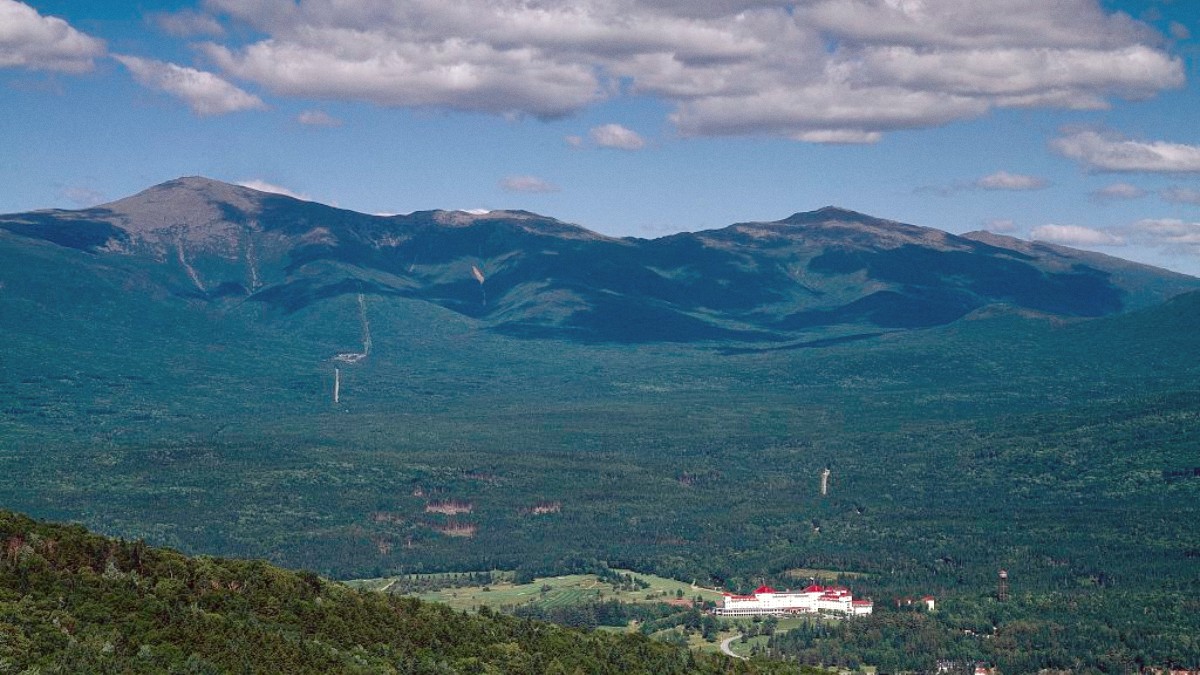
New Hampshire, USA
This region is a haven for those who cherish the outdoors. Hikers find challenges on trails leading to the highest summits in the Northeast, including the formidable Mount Washington. Families discover joy in theme parks and gentle walks to waterfalls. Scenic drives, like the renowned Kancamagus Highway, offer access to vistas that blaze with color each autumn. Winter transforms the mountains into a snowy playground for skiers, snowboarders, and snowshoers. Beyond the activities, the towns nestled in the valleys offer warmth, hospitality, and a taste of local life, complete with cozy inns, farm-to-table dining, and shops selling artisan crafts.
Visiting the White Mountains means stepping into an environment where nature dictates the rhythm of life. Each season paints the landscape with a different palette, offering new experiences and perspectives.
Spring arrives with snowmelt and emerging greenery, making way for the lush vibrancy of summer. Fall ignites the hillsides with unparalleled displays of red, orange, and gold. Winter drapes everything in white, creating a serene and challenging environment for those who embrace the cold. This ever-changing scenery prompts travelers to return and discover more.
The White Mountains span a significant portion of northern New Hampshire, extending slightly into western Maine. This expansive region forms part of the northern Appalachian Mountains, a range known for its ancient, rounded peaks in contrast to the sharper, younger mountains found elsewhere. The White Mountains distinguish themselves with some of the most rugged terrain in New England, boasting over 40 peaks that rise above 4,000 feet.
At the heart of this geographical area lies the White Mountain National Forest (WMNF). This national forest covers over 800,000 acres, encompassing diverse ecosystems from low-lying valleys and dense forests to exposed alpine zones above the treeline. It facilitates access to vast stretches of wilderness for hiking, camping, and wildlife observation.
Presidential Range, Franconia Range, Carter-Moriah Range, Sandwich Range
Mount Washington (6,288 feet)
White Mountain National Forest (WMNF)
Saco River, Pemigewasset River
Franconia Notch, Crawford Notch, Pinkham Notch, Dixville Notch
The geology of the White Mountains tells a story of ancient forces. Predominantly composed of granite and metamorphic rock, these mountains show evidence of multiple periods of uplift, erosion, and glaciation. Glaciers, retreating thousands of years ago, scoured valleys, deposited erratics (large boulders left behind), and shaped the notches that serve as natural gateways through the ranges.
Rivers and lakes also sculpt the White Mountains landscape. The Saco River flows eastward from Crawford Notch towards the Atlantic Ocean, popular for canoeing and kayaking. The Pemigewasset River originates in Franconia Notch and flows south, forming a central artery through the western part of the region.
Among these, Mount Washington stands tallest at 6,288 feet, claiming fame for its exceptionally harsh weather conditions, considered among the worst on Earth.
This geographical setting frames all activities and attractions in the White Mountains, from its dense forests to its exposed, windswept summits. The interplay of high peaks, deep valleys, and flowing water creates a diverse and dynamic environment for exploration.
The White Mountains hold a history as deep and layered as their granite peaks, reflecting centuries of human interaction with this powerful landscape. Native American tribes, including the Abenaki and Pennacook, inhabited the region before European settlement, using the land for hunting, fishing, and seasonal migration, respecting the mountains as sacred places.
European exploration began in the early 17th century, initially for fur trading and later for lumber. The vast forests supplied timber, fueling logging camps and sawmills. The mid-19th century introduced tourism, with artists and writers popularizing the region. This period saw the rise of "Grand Hotels" like the Omni Mount Washington Resort, drawing wealthy urbanites seeking escape and nature.
The White Mountain National Forest was established in 1918, protecting vast tracts of land from commercial exploitation and preserving them for public enjoyment.
The 20th century saw the automobile replace the train, prompting the development of scenic byways like the Kancamagus Highway and the Mount Washington Auto Road.
The collapse of the Old Man of the Mountain rock formation in 2003 underscored the dynamic nature of this ancient landscape and its continuous evolution.
The grand hotels still welcome guests, covered bridges dot the landscape as reminders of earlier times, and the protected national forest offers a sanctuary for nature and recreation.